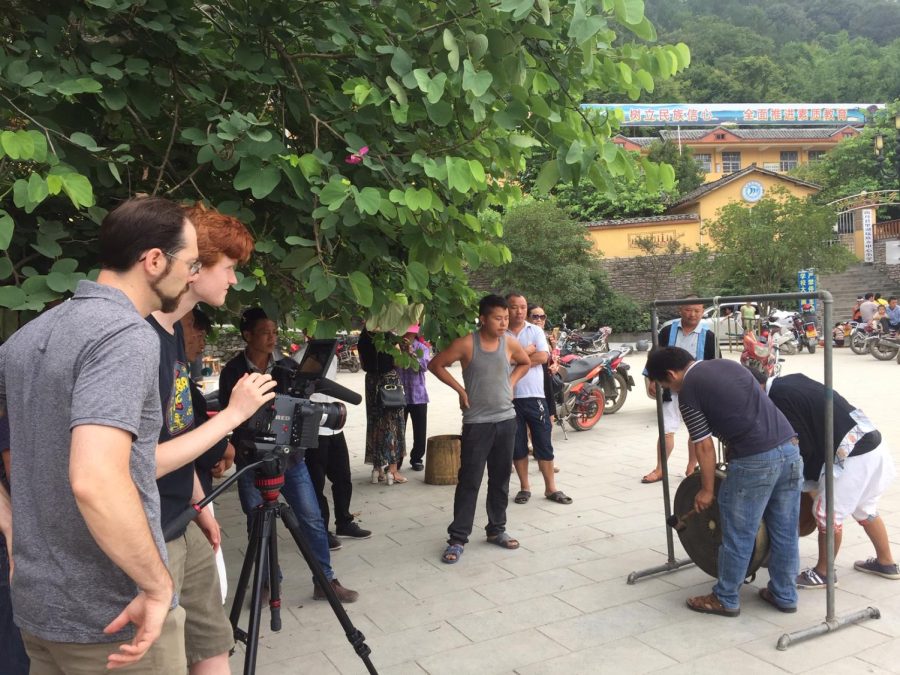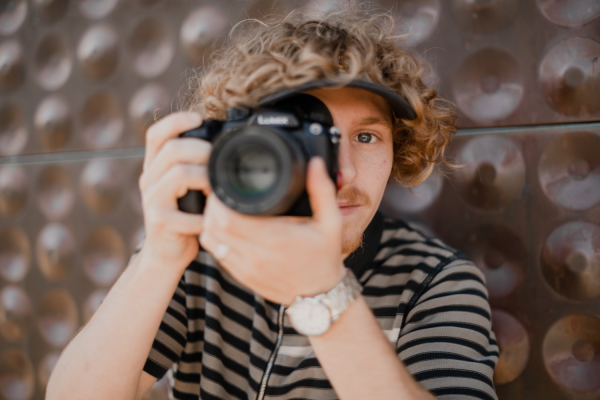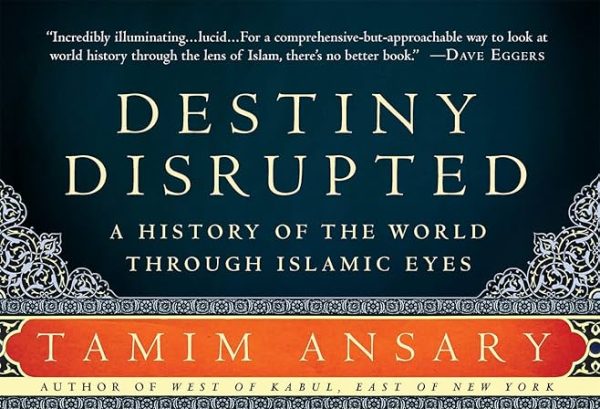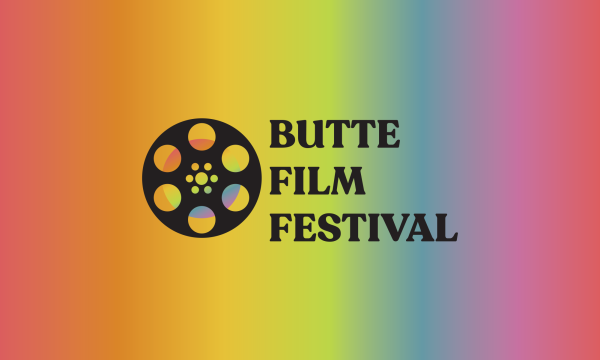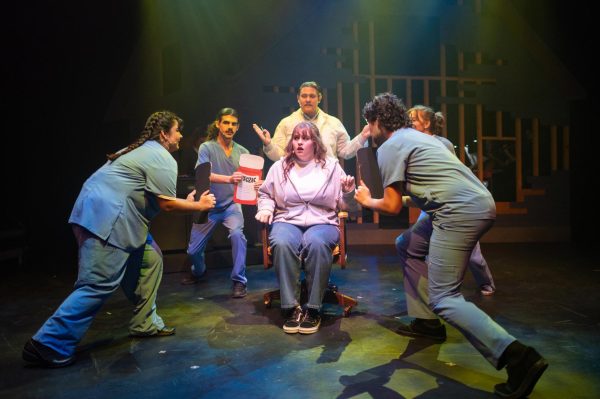Drums that speak to the heavens
Cinematographer/Editor,Tanner Hansen(Red Hair) with Dr. Nitzky (Brownish Hair) filming in Lihu township, Nandan County, Guangxi, China. Photo provided to William Nitzky, PhD.
Dr. William Nitzky of Chico State’s anthropology department immerses viewers in Southwest China, educating his audience on the cultural importance of large, bronze drums with his latest 26-minute video ethnography, “Bang the Drum.”
The ethnography delves into Baiku Yao, a branch of minorities of the Yao people from the village of Huaili, a remote area in the Guangxi Zhuang Autonomous Region. Nitzky imbeds with them to contextualize the significance of the large bronze drums.
The first cultural use of the drum is to speak to the heavens. During funerals the Baiku Yao uses the drum and it’s deep kinda soft sound to open the path for souls to reach their ancestral lands.
In the film, Lu Chaojin, the town’s mayor, discusses the importance of the drum’s sound.
“For us Baiku Yao, the most important part of a bronze drum is the sound,” Chaojin said.
To the Yao, it doesn’t matter if you like the looks or how old it is. The value of a drum is in its sound.
The second use of the drums is more of a recent development, largely due to tourism. The drum has now moved to centerstage for tourist performances.
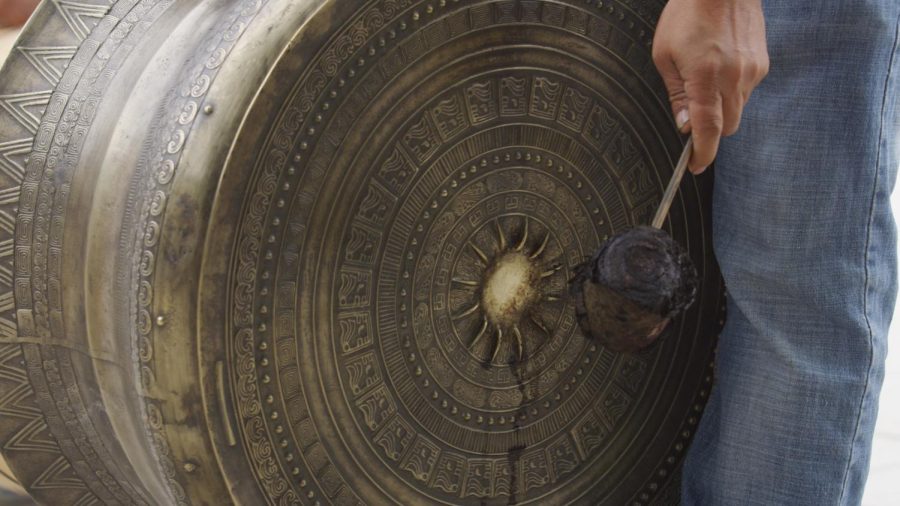
According to the film, there was a movement to destroy cultural heritage during China’s Cultural Revolution from 1966 to 1976, so drums were destroyed and forbidden to play.
It wasn’t till after 1978 that there was a cultural revival, and the drums started to make a comeback.
In Dr. Nitzky’s director’s statement, he explains that the revival and the protection of the bronze drums could be attributed to two main reasons.
First, the drums started to be “identified as heritage worth preserving and protecting by scholars and the Chinese Government.”
Secondly, the drum is “a cultural symbol of the Baiku Yao that could be exploited as an asset.”
In just under 30 minutes, Nitzky efficiently immerses the viewer through the use of the environmental shots of the momentous green mountains and interviews from villagers to show an ever-evolving China and the pressures of the Yao village of Huaili to fit in.
Tanner Hansen, Chico state alum who is credited as one of the main editors of the film and cinematographer for the project joined Dr. Nitzky on his trip to the village.
“So it was just the two of us filming the whole thing,” Nitzky said. “And after we got back, we took about six to eight months editing the entire film, all of the interviews I translated, and then we sat together and edited the film together.”
Nitzky said the filming started in the summer of 2018, and was edited in the spring 2019 and fall of 2020. Sadly he has not been able to go back to visit due to traveling restrictions.
Dr. Nitzky’s interest in the village developed when his love for cultural heritage protection and museum development began to grow.
The Huaili village is one of the first ecomuseums in southern China, a kind of a village-based museum.
Before the idea of the documentary, Nitzky visited this particular village to research the relationship that the museum has with the villagers who call it home.
That is when he first learned about the importance of the bronze drum.
The film’s goal is simple. A documentary like this exposes the audience — who are mostly Westerners and students, especially ones here on campus at Chico State — to the history and culture of the Huaili village.
For the future Dr. Nitzky plans on a new project based on his research in China and in Huaili. The new project examines the development of a young group of filmmakers from the Baiku Yao community, who produce village-centered documentaries on their own cultural heritage.
Mario Ortiz can be reached at [email protected] or @realnameismario on Twitter.



